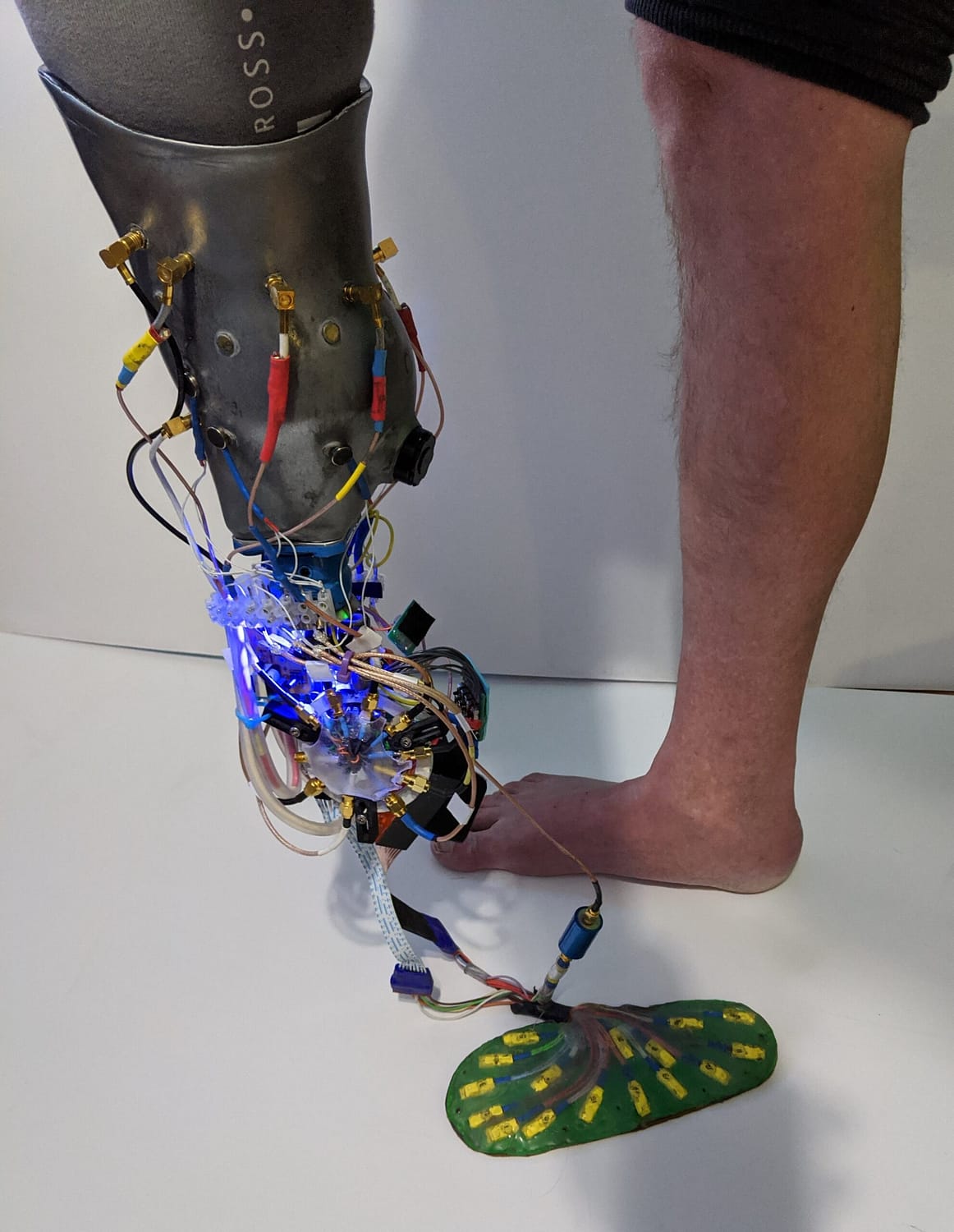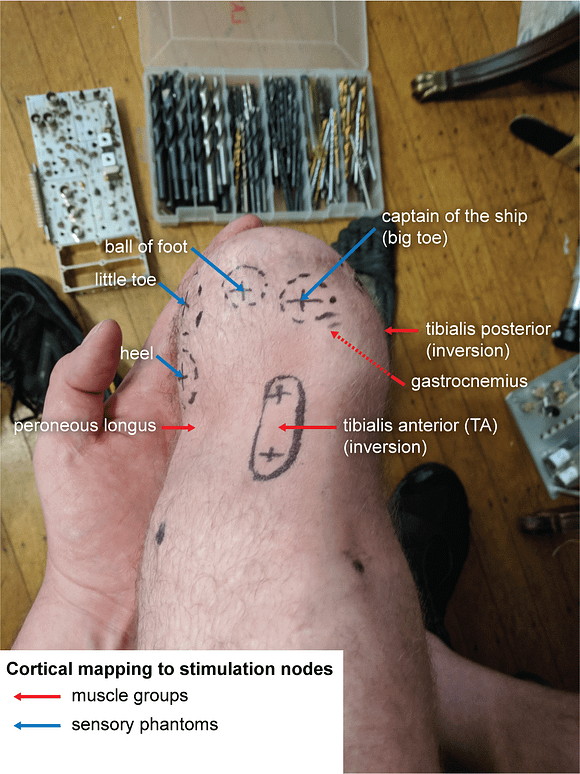The development of bionic and cybernetic systems illuminates new potentials for the future of non-invasive, networked, neuro-muscular stimulation. In 2017 I was the third patient to undergo the experimental Ewing amputation (left below-knee) after a lifetime of complications from a congenital clubfoot. Since losing my leg I have been presented with a unique opportunity to re-engineer my body. I designed and built this full-stack 16-channel prototype as a platform to regain dynamic feedback from my environment (and yes, I realize the irony that, as the father of a four-year-old, I have now restored my ability to feel it when I step on LEGOs).
Distributed sensory feedback and neurostimulation
The capabilities of the human body are extraordinary in their sensing modalities: dynamics, adaptation, habituation, and cortical remapping. This system delivers real-world information (i.e. ground and gait dynamics) to the residual limb through biphasic surface neurostimulation that specifically targets nerve groupings and musculature differentiated by the geometry of the limb. One of the greatest challenges I have faced in prototyping these systems is a common one, but it is paramount to address. How do we overcome habituation from static sensory nodes? With this device I explore the use of biphasic differential surface stimulation across localized nodes to induce a biologically feasible feedback mechanism for continued use.
Regaining sensation of the immediate terrain has completely transformed my experience of wearing a passive/fixed carbon fiber blade. The spatial awareness this feedback delivers directly informs how I move and engage with my prosthesis. Wearing this, I feel my “foot” in contact with the ground. I am able to walk the rocky beaches near our house without thinking. When I turn off the feedback, I am returned to only feeling my residual limb in a socket, removed from the environment, and only able to react to changes in terrain as they propagate through the entire prosthesis.
We need to start thinking about our bionics and interfaces as exoskeletons enabling hypertrophy during ambulation with neuromuscular feedback.
Process excerpts:
This system serves as a experimental platform, allowing me to “plug and play” different co-sensory feedback pathways each day as I wear it while navigating and recording dynamic real-world environments.


